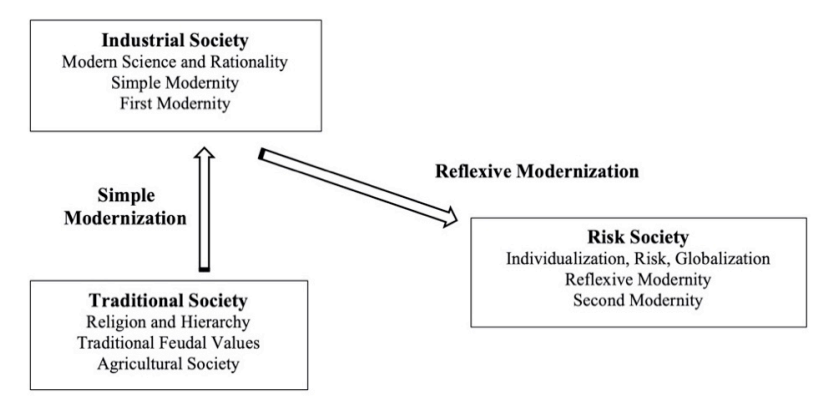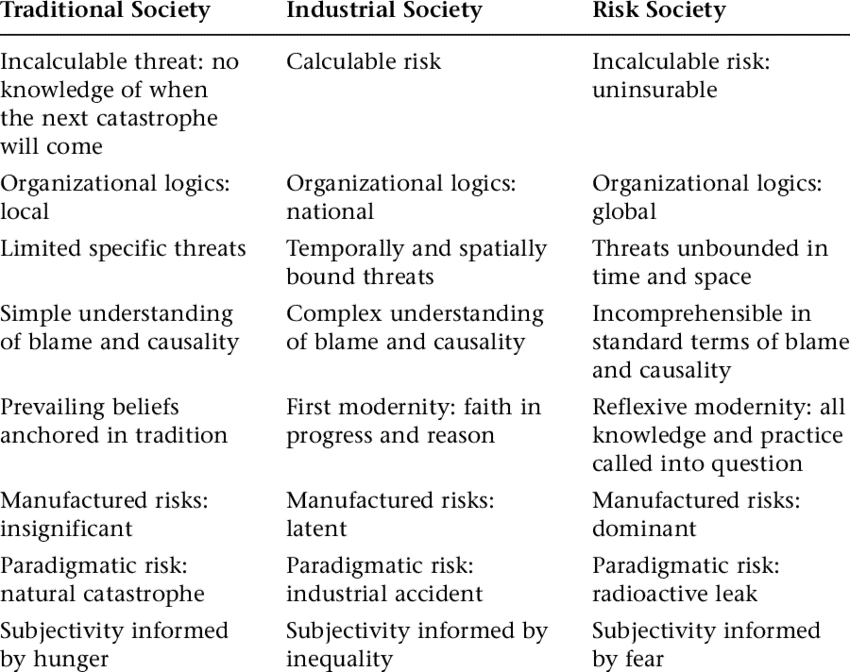7667766266
enquiry@shankarias.in
Mains Syllabus: GS I - Salient features of Indian Society, Diversity of India; Role of women , developmental issues, urbanization, their problems and their remedies.
Despite technological advancements and promises of progress, we find ourselves continually facing new, unforeseen risks.
The book “ Risk Society: Towards a New Modernity” was written by Ulrich Beck and published in 1986 provide a panoramic analysis of the condition of Western societies.

